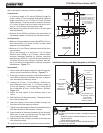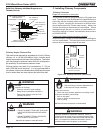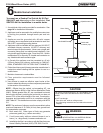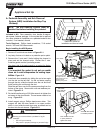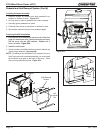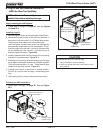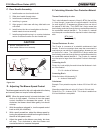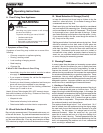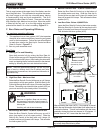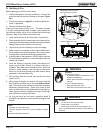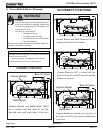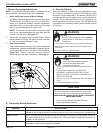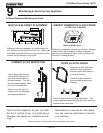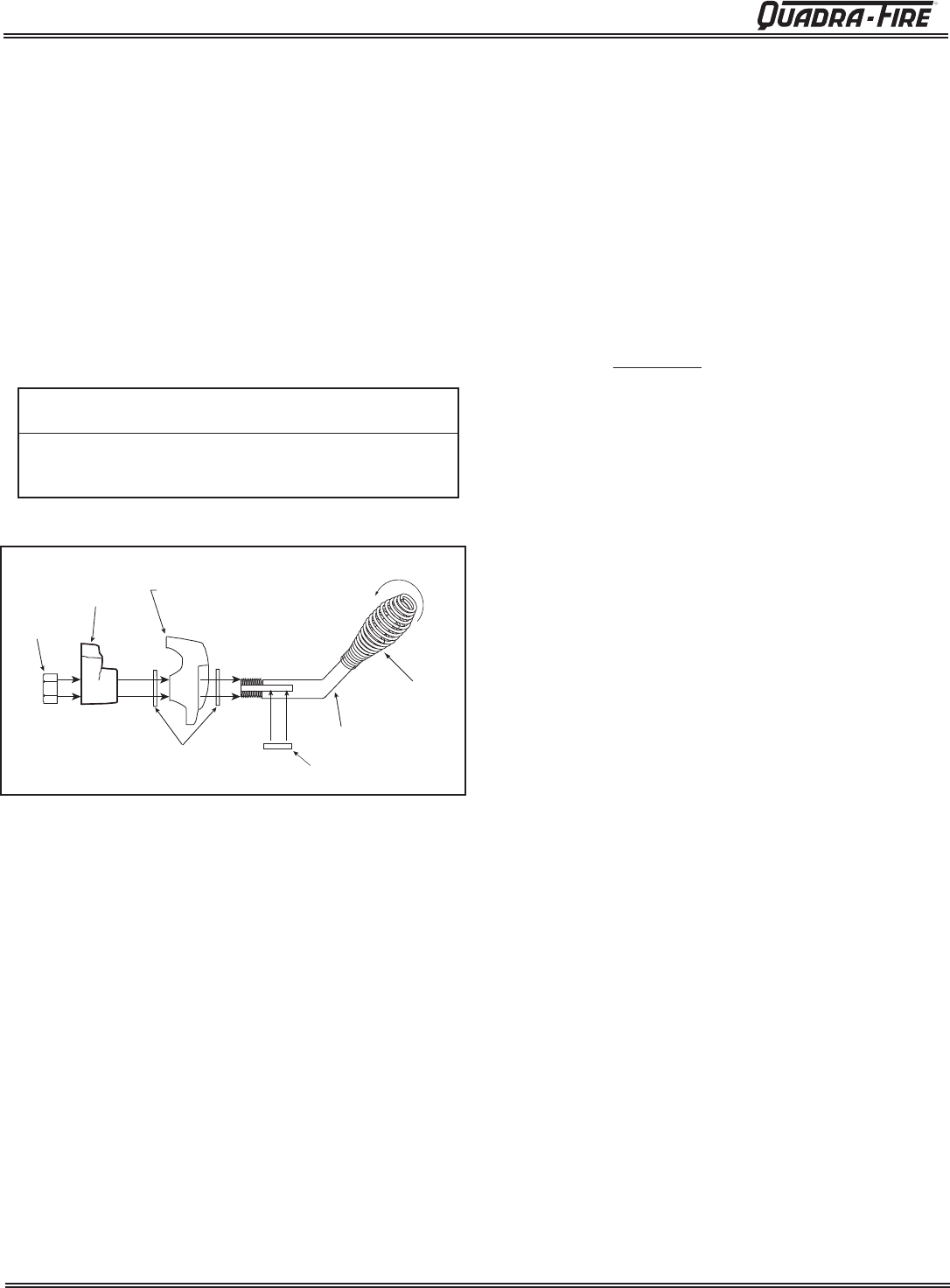
Page 24
7033-277I
July 7, 2011
R
3100 Wood Stove Series (ACC)
N
OTE: When the speed control is turned clockwise, it will
click on to high speed. Continue to turn the speed
control clockwise to decrease the speed. At full
clockwise, the blower should blow gently, but should
not stop.
1. With the appliance plugged in, turn the speed control
knob to slow (full clockwise).
2. With a small screwdriver, adjust the blower speed by
turning the adjustment mechanism through the hole on
the side of the speed control.
3. Adjust the speed so the blower runs slowly, but does
not stop. Turn clockwise to slow the blower and
counterclockwise to increase the speed.
The blower speed control for this unit is adjusted at the factory,
and normally does not require further adjustment.
D. Adjusting The Blower Speed Control
C. Door Handle Assembly
1. Install washer on door handle shaft.
2. Slide door handle through door.
3. Install second washer(s) as shown.
4. Install key in groove.
5. Align groove in latch cam with key; slide latch cam
over shaft
6. Install locknut but do not overtighten as the door
handle needs to move smoothly.
7. Install spring handle turning in a counter-clockwise
motion to desired location on door handle rod.
Figure 24.1
Locknut
Door Cross Section
(example)
Latch Cam
Spacing
Washers
Square Key
Door Handle
Spring
Handle
CAUTION
• Do NOT overtighten lock nut.
• Door handle needs to move smoothly.
E. Calculating Alternate Floor Protection Material
Thermal Conductivity: k value
The k value indicates the amount of heat (in BTU’s) that will fl ow
in 1 hour through 1 square foot of a uniform material 1 inch thick
for each degree (F) of temperature difference from one side of
the material to the other. The LOWER the k factor means less
heat is being conducted through the non-combustible material to
the combustible material beneath it. The k value of a material
must be equal or smaller then the required k value to be accept-
able.
(BTU) (inch)
(foot
2
(hour) (
o
F)
Thermal Resistance: R value
The R value is a measure of a material’s resisteance to heat
transfer. R value is convenient when more than one material is
used since you can add the R values together, whereas you can
not do this for k value. The HIGHER the R factor means less
heat is being conducted through the non-combustible material to
the combustible material beneath it. The R value of a material
must be equal or larger then the required R value to be accept-
able.
Converting k to R:
Divide 1 by k and multiply the results times the thickness in inch-
es of the material.
R = 1/k x inches of thickness
Converting R to k:
Divide the inches of thickness by R.
k = inches of thickness/R
Calculatons:
Example: Floor protection requires k value of 0.84 and 3/4 inch
thick.
Alternative material has a k value of 0.6 and is 3/4 inch thick.
Divide 0.6 by .75 = k value of 0.80. This k value is smaller than
0.84 and therefore is acceptable.




